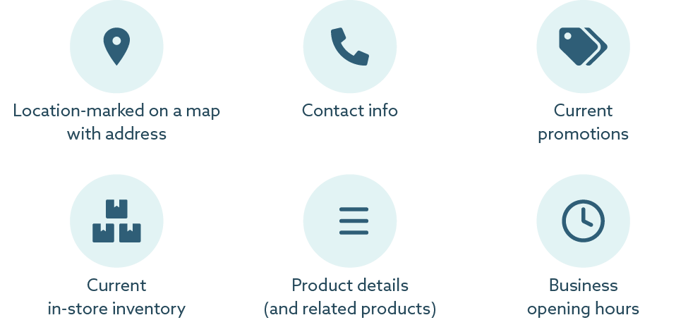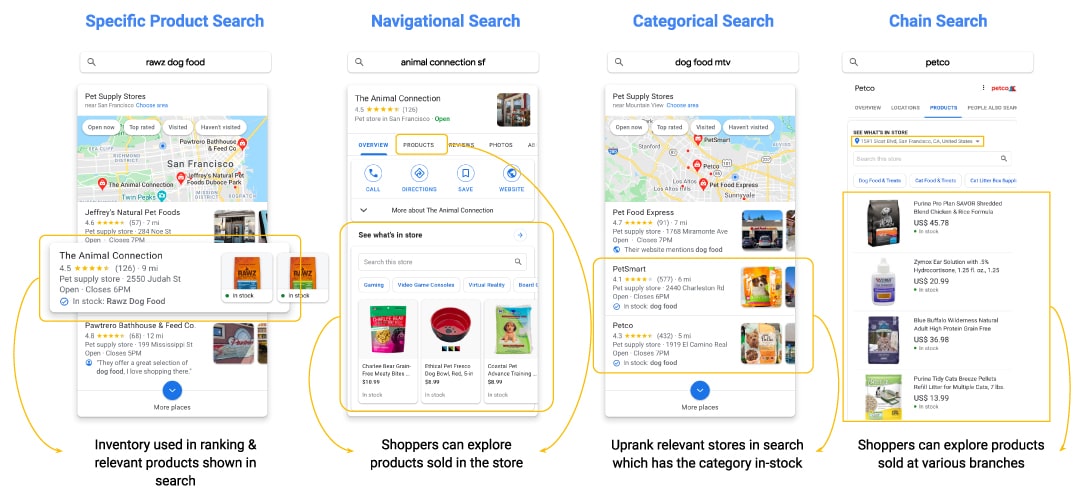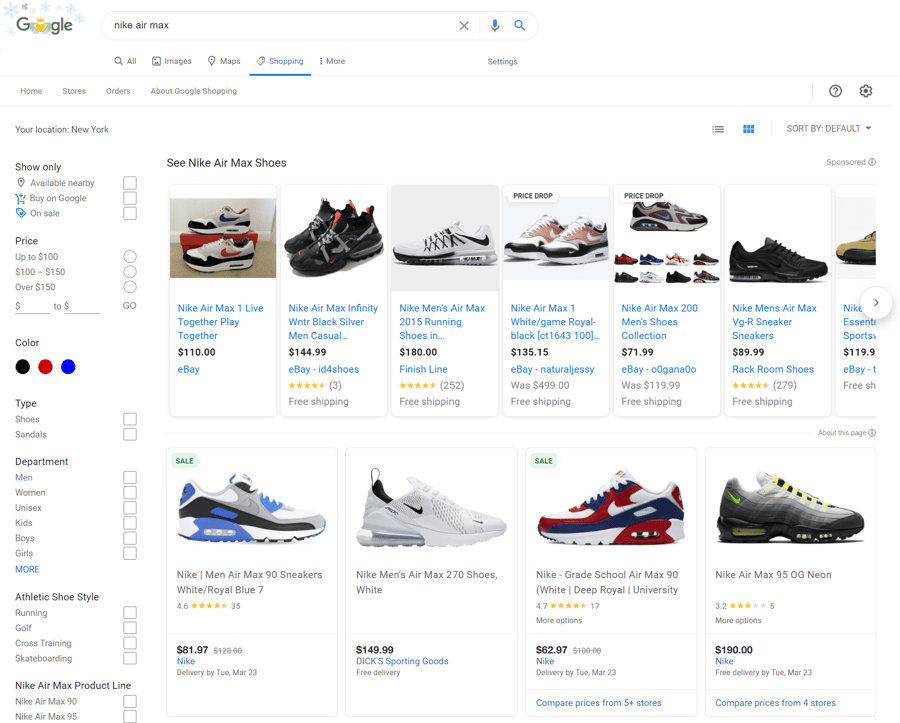Google LIA for Ecommerce advertisers
Posted on March 26, 2021 (Last Updated: January 22, 2024)
Google Local Inventory Ads (LIAs) are an effective marketing tool, designed to help brick-and-mortar businesses to connect online shoppers with physical product offers available in-store.
![]()
It is a new feature for Google Shopping, which now shows whether or not a product is in stock at the physical store at that time. Google started the LIA project in January 2017 and now it’s available in more than 20 countries - Australia, Austria, Brazil, Canada, Denmark, France, Germany, India, Ireland, Italy, Japan, Netherlands, New Zealand, Norway, Poland, Spain, Sweden, Switzerland, the UK, and the US.
How does Google LIA work?
When a potential customer searches for a product within the geographic area set by the business, LIA is displayed as a dynamically generated ad, appearing on the top of the search results page.
Shoppers can quickly review local businesses that have what they’re looking for, as well as the item they can see, price, and description. Furthermore, businesses can choose to direct users to a Google storefront page or their own landing page.
Google Local Storefront
The storefront is the page to which any shoppers will be sent from LIAs that they click. From your local storefront customers can see more information, such as the below:

The positive of this is that you can increase ready-to-buy foot traffic to your shop.
Shopping Journeys
Since there are various ways that a potential buyer will shop the inventory ads are integral to different shopping journeys.

Specific Product Search
Customers might look for a specific product, Google will show the particular item or branded product available in the geographic area. In this case, inventory is used in ranking and relevant products shown in search results.
Navigational Search
This refers to when a customer is looking for a particular store, branded product in a particular geography. In this scenario, Google can redirect the potential customer to ‘Google my business’ and shoppers can explore products sold in the store.
Categorical Search
When a potential customer searches for a product and geo-location is used to ensure that the shopper will view the product available near him. Here google up-ranks relevant stores in search which had the category in stock.
Chain Search
Often customers search for specific chains or brands. When this happens they get a list of all the chain/brands’ locations and can also explore products sold at various branches.
See What's In Store (SWIS)
Mapping Google product categories can be very tough work. All categories must be entered exactly as in Google’s current taxonomy. WakeupData makes this step much easier and more automated.
See What’s In Store refers to your inventory on Google My Business (GMB) listings. When you provide your inventory data to Google your inventory is automatically searchable through GMB profile. This is an organic and free way to display your inventory.
Free listings
Free shopping listings showcase products and shop information to potential customers inside a specific geographical area. The free listing appears on the Google Shopping tab or Shopping app right under the paid ads.

How does Google LIA benefit eCommerce advertisers
As an e-tailer, we assume you have already got your product data structured and up-to-date. Making your product data available to Google LIA allows potential customers in your local area to find your products and check availability.
For eCommerce businesses Google LIA can be an added source of the traffic to your website and/or your physical store/s
Conclusion
As customers are starting their buying journey online, Google LIA provides greater visibility of your shop on Google Shopping and simultaneously improves your customer experience. The “in stock” icon, according to Google, has proven to have higher CTR and is triggered by local data provided by the merchant.
This is beneficial as it means that in the long run, you’ll have a decrease in the cost of advertising and an increase in efficiency.
However, for you to get full leverage of LIA it’s crucial to have updated information. This way Google can provide the best search result for your potential buyer, attracting more customers to your store and safeguarding a competitive advantage as you build a reliable portfolio online.
Getting Started with LIA
As an official Google partner, WakeupData is an easy choice for retailers wanting perfectly structured product feeds for Google LIA.
Book a demo below or visit our Local Inventory Ads page to find out more and get started with high-performing Google Local Inventory Ad campaigns.




